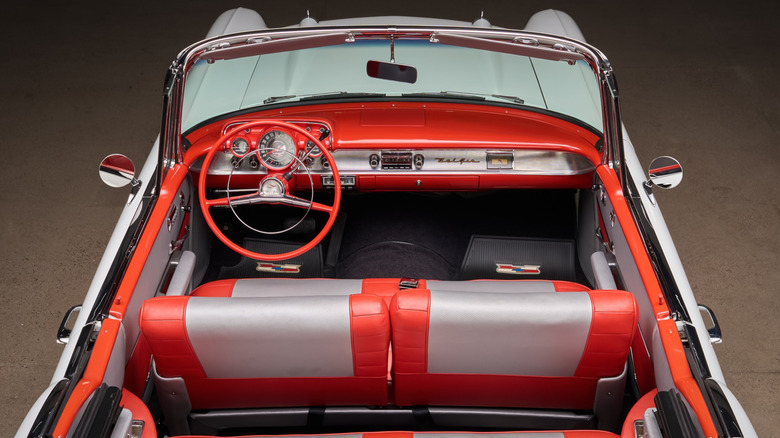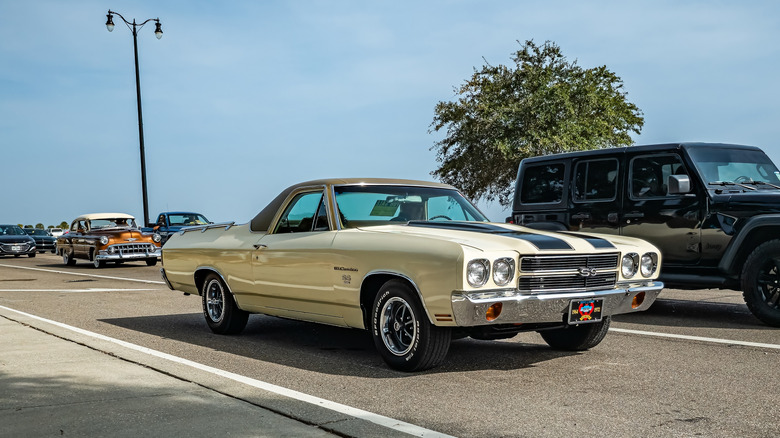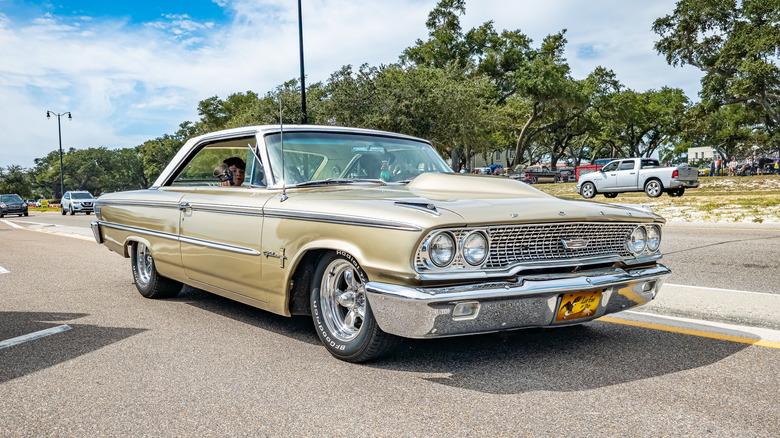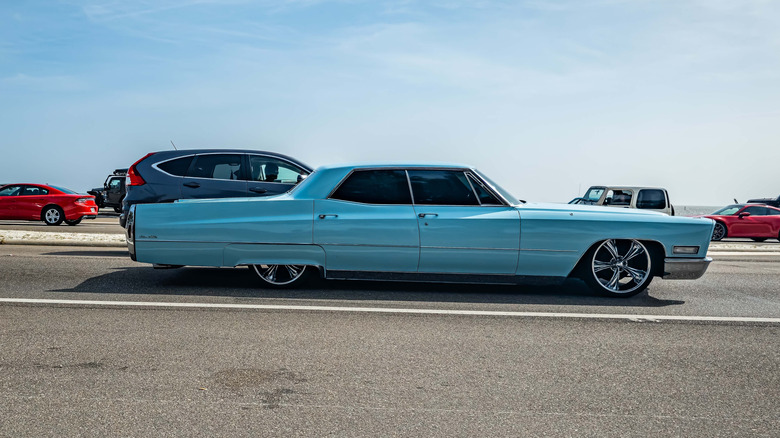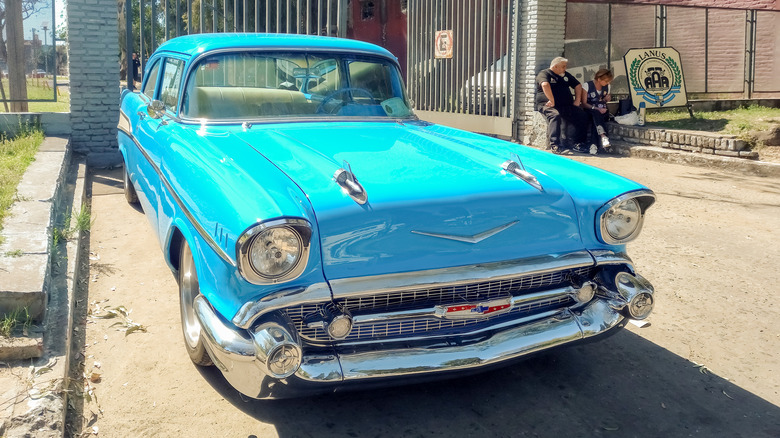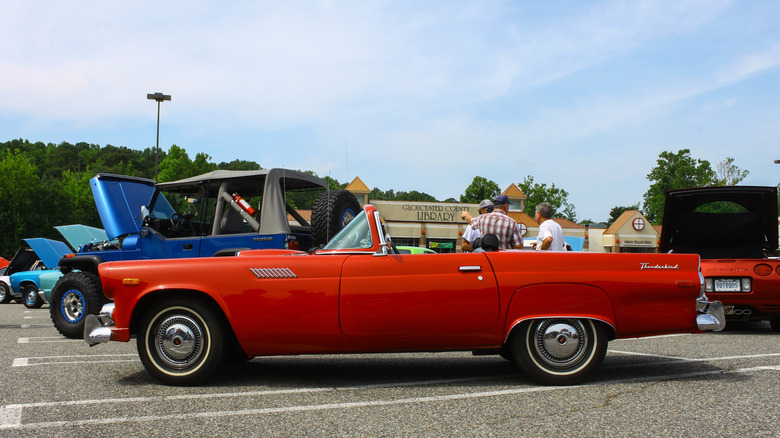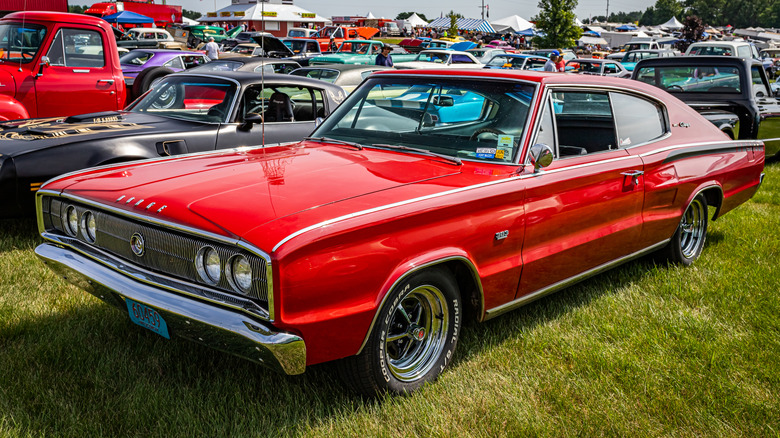6 Classic Cars That Featured Bench Seats
Classic cars capture the imagination like nothing else. Some stand out for their bold designs, while others are remembered for unique features that are now lost in time, like rolling drum odometers, tailfins, and wood grain interiors. Either way, they appeal to us in all sorts of ways. And sometimes it's the great car features that set them apart from the rest. Among the many standout features of classic cars, one design element remains truly iconic: the bench seat.
Once a staple of American automobiles, bench seats offered a spacious and communal seating experience that is rarely seen in modern vehicles. While today's bucket seats lean towards individual comfort and a sportier look — with ventilation and heating options — bench seats embody a different era.
Dating back to the earliest days of car manufacturing, bench seats were designed to be functional and simple. They could easily accommodate multiple passengers in the front row and rear rows. As automotive designs evolved, these seats became a mid-century luxury and were adorned with plush upholstery and stylish detailing. Though they have been largely phased out in favor of more modern seating designs, bench seats are an enduring part of classic car history.
1969 El Camino SS
The 1969 El Camino SS was equipped with a powerful V8 engine and stood out as one of the classic cars featuring the practicality of a truck bed, making it an impressive sight on the road. The standard 1966–1969 El Camino model came with a fabric bench seat, while the more luxurious Custom model offered options of cloth-and-vinyl or all-vinyl bench seats. Although bucket seats with a center console were available, the bench seat was a popular choice, providing a spacious and traditional feel. The interior design of the El Camino was influenced by the Chevelle, featuring SS 396 badges on the dashboard and door panels. The SS emblem was also prominently displayed at the center of the steering wheel.
Built on the A-body platform from 1964, the Camino had double-wall cargo panels. It also came with a ribbed steel floor that reinforced its utility. The tailgate was strong and easy to open with a single center release. Like Chevelles, the El Camino rode on a sturdy perimeter steel frame. However, convertibles and El Caminos got boxed frame members for extra strength. To top that off, its rear suspension also featured factory-installed air shocks.
Buyers seeking raw power could opt for the Z25 SS 396 package. This package unlocked a 325-horsepower Turbo 396 engine, a floor-shifted three-speed manual transmission, front disc brakes, dual exhaust, and a blacked-out grille with an SS badge. The 1969 El Camino SS had a special hood, and G70-14 red stripe tires on 14-by-7 sport wheels.
1967 Ford Galaxie
First introduced in 1959, the Galaxie got its name from the space race era. It was a true full-size American classic that offered spacious bench seats and a smooth ride and is, today, still one of the best-looking Ford car models ever designed. Bench seats were standard in most Galaxie models. They were featured in the front and rear rows, which provided plenty of room for passengers. However, sportier versions like the Galaxie 500 XL offered standard bucket seats with a center console.
The seats themselves featured vinyl upholstery that varied by trim level, with different patterns and colors to match the buyer's preference. Ford offered optional upgrades like air conditioning, power windows, and a dashboard-mounted clock. On the outside, the Galaxie carried a traditional, bold design with a large grille, quad headlights, and chrome accents.
One of the features that made the 1967 Galaxie 500 so cool is its 7-liter engine option. Most models were equipped with a 390-cubic-inch V8. A unique powertrain was the 7-liter 428-cubic-inch V8 in the Galaxie 500, pumping out 345 horsepower, making the Galaxie one of the most powerful full-size Fords of the decade. It came in several body styles, including sedan, hardtop, convertible, and the fastback.
1972 Cadillac Deville
The 1972 DeVille was part of a long line of Cadillacs that were marketed as the "Standard of the World." Carrying on the legacy of the previous model year, the DeVille moved into 1972 with updated features like a beefed-up bumper, a new ignition switch location, and a V-shaped emblem. It measured 227.4 inches long and nearly 80 inches wide — a true land yacht.
Aside from being one of the best-looking Cadillac models, the DeVille featured a fancy interior with plush bench seats, which made this full-size luxury sedan a favorite among high-end buyers. The front bench seat featured a foldable center armrest. This added flexibility, while the 130-inch wheelbase contributed to the spacious interior. The standard set of features included power-adjustable front seats, power windows and locks, and air conditioning, making it one of the most well-equipped cars of its time.
Under the hood, the Cadillac Deville had a 7.7-liter (472-cubic-inch) V8 engine, which paired with GM's Turbo Hydra-Matic THM-400 3-speed automatic transmission, kicking out 220 horsepower and 495 Newton-meters of torque. Despite its size, the DeVille was engineered for effortless cruising, with a mechanical fuel pump, intake silencer, and improved automatic choke.
1957 Chevrolet Bel Air
The Bel Air is among the most beautiful Chevys ever designed, instantly recognizable for its sleek styling, pronounced tail fins, and jet-inspired details. As the brand's top-of-the-line model, it offered a spacious interior with bench seats. These seats provided a comfortable ride for up to six passengers. The front bench seat came with split-back functionality in some models, while convertibles featured rear seat frames for added support.
On the outside, the Chevy Bel Air had chrome accents, two-tone color options, and a futuristic design. It introduced tubeless tires, a Cadillac-inspired lower and wider stance, and aerodynamic bumperettes resembling jet nose cones.
While the base model had a 235-cubic-inch straight-six, buyers could opt for Chevrolet's legendary V8 engines. The 265-cubic-inch V8 produced 162 horsepower, and the 283-cubic-inch "Turbo Fire" V8 came in two versions—a 185-horsepower model with a two-barrel carburetor and a 220-horsepower "Super Turbo Fire" version with a four-barrel carburetor. Notably, 1957 was the year fuel injection debuted as an option on the Bel Air, which was a major leap for the time.
1974 Thunderbird Burgundy Special Edition
The Burgundy Special Edition was part of the sixth-generation Ford Thunderbird, a car that was already known for its large, bold presence on the road. Available exclusively in 1974, this special edition brought an extra level of luxury to the Thunderbird lineup. It featured an elegant interior with an individual adjustable split bench. Buyers could choose from either Red Victoria Velour Cloth Trim or Dark Red leather with vinyl trim.
On the exterior, the Burgundy Special Edition made a striking impression with its deep burgundy metallic paint, color-matched vinyl roof, and gold pinstripes. Additional upscale touches included wire wheel covers and premium bodyside molding.
After Ford discontinued the 429-cubic-inch engine in 1973, the 1974 Thunderbird Burgundy Special Edition came with a 460-cubic-inch V-8 engine. This powertrain was sourced from Lincoln-Mercury and required unleaded gasoline. While its 220-horsepower output wasn't particularly groundbreaking, it delivered an impressive 355 pound-feet of torque. However, the big-block V8 was notorious for its fuel consumption, a common trait of the era. On the bright side, the engine's robust design and smooth, quiet operation made it a durable and well-regarded powertrain choice.
1970 Dodge Charger
Building on its bold styling and performance heritage, the 1970 Dodge Charger retained many signature features from the previous model year, including its sleek design, hidden headlights, and racing-style gas cap. It was part of the B-body series, which also included the Coronet and Super Bee. In 1970, Dodge introduced a cost-saving change to the base Charger by replacing the bucket seats with an all-vinyl front bench seat. The split-folding bench seat could accommodate up to three passengers in the back.
While the base model came with a vinyl bench seat, the Charger 500 model featured bucket seats and a more refined trim. The R/T models came with premium details like simulated wood grain on the dashboard and a 150-mph speedometer.
Also available for the 500 and R/T tri models was the Special Edition (SE) package, which included genuine leather seat facings and an upgraded simulated walnut steering wheel. The pistol grip shifter also became an option in 1970. The base model Charger came with a 225 CID slant-six engine that produced 145 horsepower. The R/T models, on the other hand, came with powerful V8 engines like the 440 CID V8 that delivered 375 horsepower.
